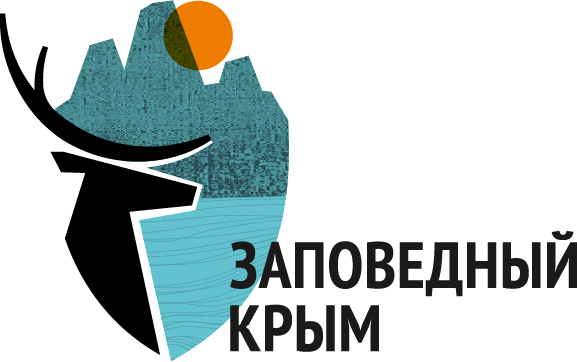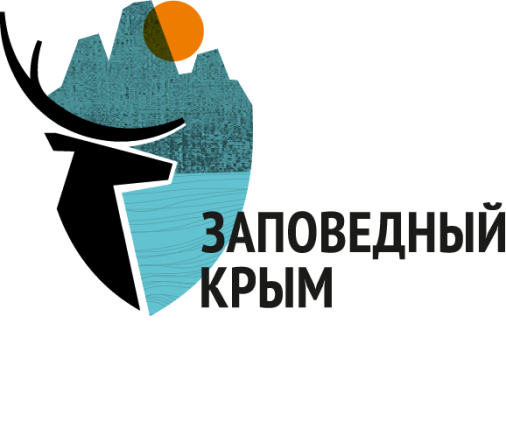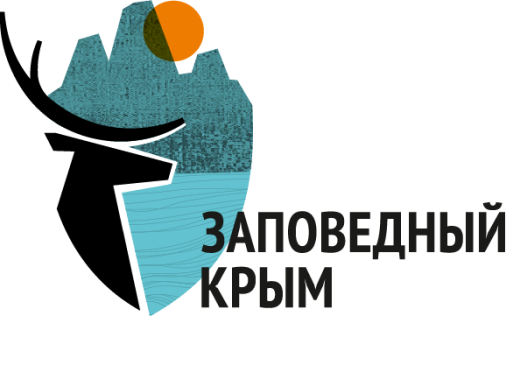

FAUNA
Yalta Mountain-Forest Nature Reserve is inhabited by:
- mammals: 36 species;
- birds: 96 species;
- reptiles: 11 species;
- amphibians: 4 species;
- mollusc: 19 species;
- spiders: 135 species;
- lepidopterans: 131 species,
- beetles: 48 species.
The diversity of natural conditions and vegetation cover caused its high animal species diversity.
The diversity of natural conditions and vegetation cover caused its high animal species diversity.
Yalta Mountain-Forest Nature Reserve is inhabited by:
- mammals: 36 species;
- birds: 96 species;
- reptiles: 11 species;
- amphibians: 4 species;
- mollusc: 19 species;
- spiders: 135 species;
- lepidopterans: 131 species,
- beetles: 48 species.

Mammals
The nature reserve is inhabited byVulpes vulpes, Mustela nivalis vulgaris, Capreolus capreolus, Lepus europaeus, Sylvimus sylvaticus L., Erinaceus europaeus and others.
Sciurus vulgaris exalbidus, Ovis gmelini musimon and Sus scrofa were successfully introduced to the nature reserve at the beginning of the twentieth century.
Sciurus vulgaris exalbidus, Ovis gmelini musimon and Sus scrofa were successfully introduced to the nature reserve at the beginning of the twentieth century.
Mammals
The nature reserve is inhabited byVulpes vulpes, Mustela nivalis vulgaris, Capreolus capreolus, Lepus europaeus, Sylvimus sylvaticus L., Erinaceus europaeus and others.
Sciurus vulgaris exalbidus, Ovis gmelini musimon and Sus scrofa were successfully introduced to the nature reserve at the beginning of the twentieth century.
Sciurus vulgaris exalbidus, Ovis gmelini musimon and Sus scrofa were successfully introduced to the nature reserve at the beginning of the twentieth century.
Endemic species
Some mammals of the nature reserve are considered as endemic subspecies. For instance, Sorex araneus, Martes foina, Cervus elaphus and others.
Some mammals of the nature reserve are considered as endemic subspecies. For instance, Sorex araneus, Martes foina, Cervus elaphus and others.
Rare species
In the Red Data Book of the Republic of Crimea there are many bats (Rhinolophus ferrumequinum, R. hipposideros, Myotis bechsteini, M. oxygnathus, M. emarginatus), and Neomys anomalus, Meles meles.
In the Red Data Book of the Republic of Crimea there are many bats (Rhinolophus ferrumequinum, R. hipposideros, Myotis bechsteini, M. oxygnathus, M. emarginatus), and Neomys anomalus, Meles meles.
Rare species
In the Red Data Book of the Republic of Crimea there are many bats (Rhinolophus ferrumequinum, R. hipposideros, Myotis bechsteini, M. oxygnathus, M. emarginatus), and Neomys anomalus, Meles meles.
In the Red Data Book of the Republic of Crimea there are many bats (Rhinolophus ferrumequinum, R. hipposideros, Myotis bechsteini, M. oxygnathus, M. emarginatus), and Neomys anomalus, Meles meles.

Birds
Three migration routes cross in the nature reserve. That is why its bird species diversity is so remarkable. More than 40 bird species nest there:
- in forests: Fringilla coelebs, Carduelis carduelis, Parus ater и Parus major, Parus coeruleus, Loxia curvirostra, Carduelis spinus, Aegolus funereus) and Bubo bubo;
- on mountain pastures: Lullula arborea, Anthus campestris;
Birds
Three migration routes cross in the nature reserve. That is why its bird species diversity is so remarkable. More than 40 bird species nest there:
- in forests: Fringilla coelebs, Carduelis carduelis, Parus ater и Parus major, Parus coeruleus, Loxia curvirostra, Carduelis spinus, Aegolus funereus) and Bubo bubo;
- on mountain pastures: Lullula arborea, Anthus campestris;
Rare species:
Aquila heliaca, Hieraaetus pennatus, Aegyrius monachus, Aquila clanga and A. pomarina, Circaetus gallicus, Gyps fulvus, Alcedo atthis and others.
Aquila heliaca, Hieraaetus pennatus, Aegyrius monachus, Aquila clanga and A. pomarina, Circaetus gallicus, Gyps fulvus, Alcedo atthis and others.
Reptiles and amphibians
The nature reserve is home to Mediodactylus kotschyi, Podarcis taurica, Coronella austriaca, Elaphe situla and Coluber jugularis, Ophisaurus apodus, Triturus cristatus, Hyla arborea, Rana ridibunda, Bufo viridis and others.
Reptiles and amphibians
The nature reserve is home to Mediodactylus kotschyi, Podarcis taurica, Coronella austriaca, Elaphe situla and Coluber jugularis, Ophisaurus apodus, Triturus cristatus, Hyla arborea, Rana ridibunda, Bufo viridis and others.

Invertebrates
The diversity of invertebrates is extremely high in Crimea. Numerous cicadas and butterflies inhabit the nature reserve. You can find there Cerambux cerdo and Rosalia alpina, Lucanus cervus and others.
Many invertebrate species are endemic.
Many invertebrate species are endemic.
Invertebrates
The diversity of invertebrates is extremely high in Crimea. Numerous cicadas and butterflies inhabit the nature reserve. You can find there Cerambux cerdo and Rosalia alpina, Lucanus cervus and others.
Many invertebrate species are endemic.
Many invertebrate species are endemic.
Rare species
In the Red Data Book of the Republic of Crimea there are such mantid species as Empusa fasciata and Bolivaria brachyptera, Libythea celtis, Pseudochazara euxina, Acherontia atropos.
In the Red Data Book of the Republic of Crimea there are such mantid species as Empusa fasciata and Bolivaria brachyptera, Libythea celtis, Pseudochazara euxina, Acherontia atropos.
Rare species
In the Red Data Book of the Republic of Crimea there are such mantid species as Empusa fasciata and Bolivaria brachyptera, Libythea celtis, Pseudochazara euxina, Acherontia atropos.
In the Red Data Book of the Republic of Crimea there are such mantid species as Empusa fasciata and Bolivaria brachyptera, Libythea celtis, Pseudochazara euxina, Acherontia atropos.
Photos used on this site belong to (photo credits): S. Ledenkov, I. Sikorsky, L. Moroz, V. Kostrov, N. Litvinyuk, D. Rutyanov, S. Alyomov, M. Atamanenko, G. Prokopov, D. Voinov, Y. Timofeev, Y. Shumlyaeva, M. Rozanov, V. Anzylov, V. Zyuzin, A. Gromov, Y. Zhuravleva, E. Nekadimova, N. Krymsky, K. Polyanskaya, A. Rybintsev, A. Mishin, A. Dmitrieva and naturerussia.travel
Photos used on this site belong to (photo credits): S. Ledenkov, I. Sikorsky, L. Moroz, V. Kostrov, N. Litvinyuk, D. Rutyanov, S. Alyomov, M. Atamanenko, G. Prokopov, D. Voinov, Y. Timofeev, Y. Shumlyaeva, M. Rozanov, V. Anzylov, V. Zyuzin, A. Gromov, Y. Zhuravleva, E. Nekadimova, N. Krymsky, K. Polyanskaya, A. Rybintsev, A. Mishin, A. Dmitrieva and naturerussia.travel

Yalta Mountain-
Forest Nature Reserve
Forest Nature Reserve
Kazantyp
Nature Reserve
Nature Reserve
Opuksky
Nature Reserve
Nature Reserve
Islands
and Water Area
and Water Area
Contacts
298650, The Republic of Crimea, Yalta, Sovietskoe, Dolosskoe road, 2.
+7 365 423 30 50
+7 365 437 88 41
zapovedcrimea@mail.ru
+7 365 423 30 50
+7 365 437 88 41
zapovedcrimea@mail.ru
© Crimean Protected Areas
All rights reserved. Any copying from this site is prohibited without permission of the directorate.
All rights reserved. Any copying from this site is prohibited without permission of the directorate.
If you have an emergency, witnessed a fire, illegal dumping or other law violations, dial:
+7 365 423 30 50
+7 978 904 24 40 (hotline)
+7 978 901 56 70
(Deputy Ranger Service Director)
+7 365 423 30 50
+7 978 904 24 40 (hotline)
+7 978 901 56 70
(Deputy Ranger Service Director)





